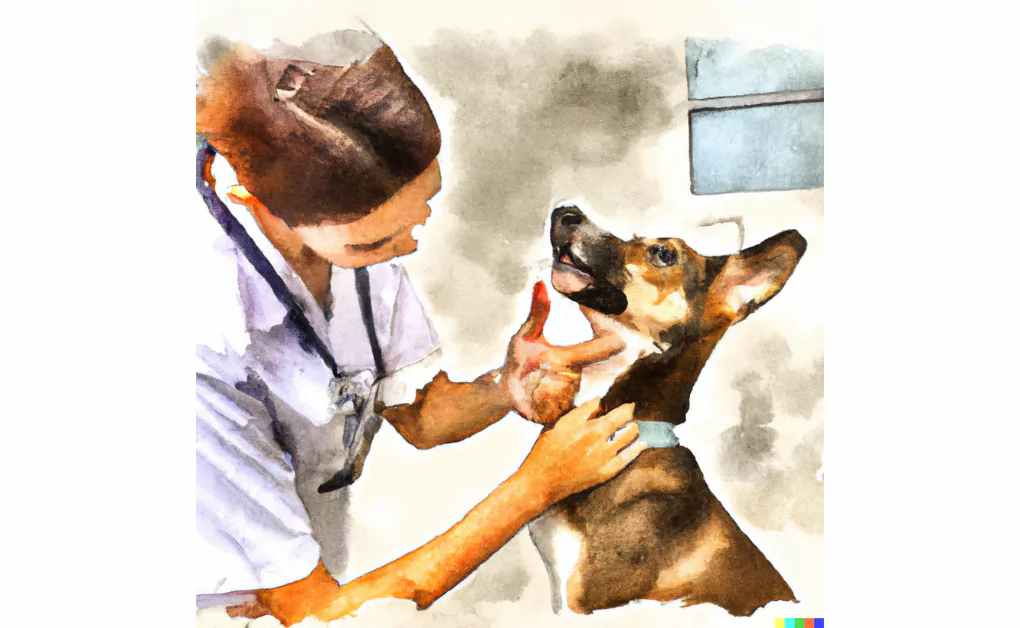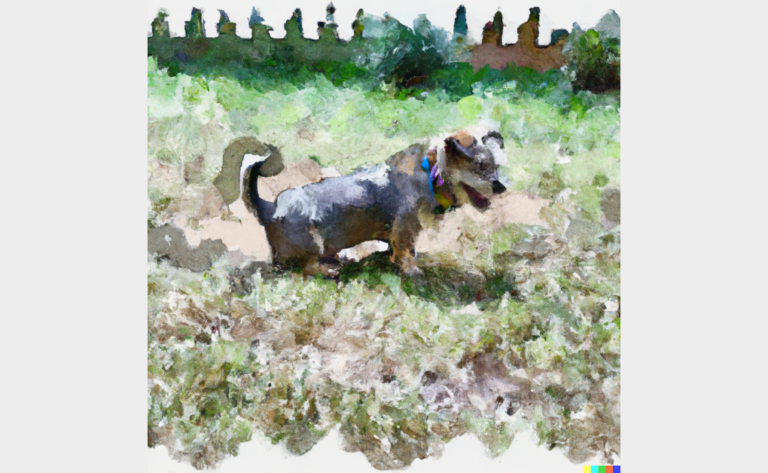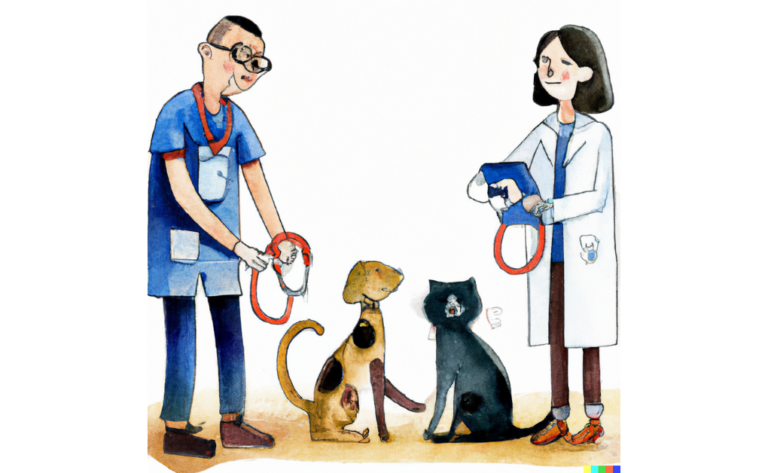What are Epulis Tumors in the Mouths of Dogs?
Introduction
Milo, a proud and caring dog parent, was alarmed when he noticed an unusual growth in his dog’s mouth. Worried about its potential implications, Milo rushed to his trusted veterinarian, seeking answers. As the diagnosis of an epulis tumor was revealed, Milo’s concern only grew. What did this mean for his beloved pet, and what could he do to help?
It’s a common understanding among pet parents that our canine companions can come across various health concerns, some of which might be challenging to identify. One of these health issues pertains to tumors forming in a dog’s oral cavity, specifically called ‘epulis tumors’ or ‘oral tumors.’ This terminology might seem complex and intimidating initially, but gaining insight into these growths and their impact on our cherished pets is essential.
In this article, we will simplify the concept of epulis tumors, including peripheral odontogenic fibroma and acanthomatous epulis, discussing what these conditions are, their symptoms, probable causes, and potential treatments. We aim to offer you a lucid and comprehensive understanding of oral ailments, including oral cancer and mouth cancer, whether fibromatous epulis, malignant tumor, oral melanoma, or acanthomatous ameloblastoma.
However, it’s essential to remember that this information is not a substitute for professional veterinary advice. Let’s embark on this informative journey together, prioritizing the health of our loyal four-legged friends.
Types of Epulis in Dogs
Epulis is a general term to describe a benign oral tumor that develops in a dog’s mouth. There are three types of epulis: fibromatous epulis, ossifying epulis, and acanthomatous epulis.
Fibromatous Epulis
This is the most common type of epulis in dogs. It is made up of fibrous connective tissue, hence the name. Fibromatous epulis are non-ulcerative and typically don’t invade the surrounding bone or tissues. They are often found on the gums surrounding the teeth and can vary in size. Despite their large and alarming appearance, they’re usually not painful for the dog. Surgical removal is typically the treatment of choice.
Ossifying Epulis
This is very similar to the fibromatous epulis, but it has areas of bone or mineral-like structures within the mass, hence the name ‘ossifying.’ Ossifying epulis can also range in size and are typically not painful. They are also usually removed surgically, and the prognosis following removal is generally good.
Acanthomatous Epulis
This type of tumor differs from the previous two because it is locally aggressive and can invade the surrounding bone tissue. Despite this, acanthomatous epulis is still considered benign as it doesn’t typically spread to other body parts. It often arises from the gums of the lower jaw. Given its aggressive nature, treatment usually involves more extensive surgery to ensure all of the tumor and any invaded bone is removed. In some cases, radiation therapy may also be recommended.
It’s important to remember that any growth in your dog’s mouth should warrant a visit to your veterinarian. Early detection and diagnosis of these tumors, or any oral masses, can lead to more effective treatment and a better prognosis for your dog.
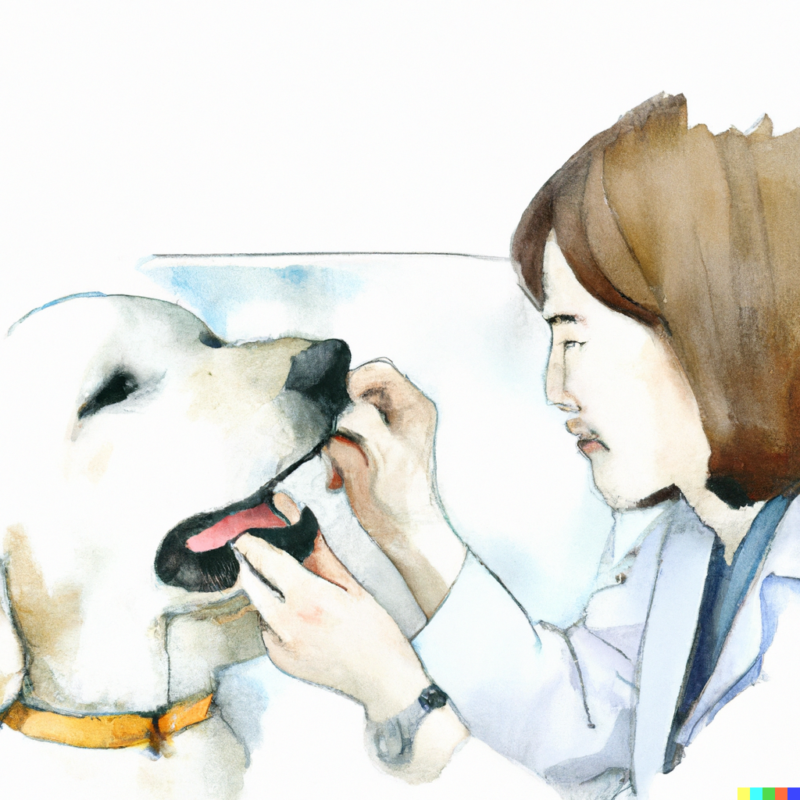
Is Every Growth in a Dog’s Mouth an Epulis?
While epulis is one type of growth that can appear in a dog’s mouth, it’s far from the only one. The oral cavity in dogs can develop a range of benign and malignant growths due to various factors. These growths’ origin can differ and may arise from the gums, bone, skin, salivary glands, or connective tissues. Understanding this broad spectrum is crucial, as not every growth is an epulis. Here are more details about the other types of oral growths:
- Gingival Hyperplasia: This is an overgrowth of the gum tissue that often appears as a firm, fleshy mass. The condition can be a reaction to chronic inflammation, such as that caused by periodontal disease, or it may be a side effect of certain medications. In some cases, it may be a breed-specific trait, seen commonly in breeds like Boxers and Bulldogs.
- Oral Papillomas (Warts): These are caused by the papillomavirus and often appear as small, cauliflower-like growths on the tongue, inside the cheeks, or on the gums. They’re most commonly seen in younger dogs with immature immune systems. Most oral papillomas resolve independently as the dog’s immune system matures and fights off the virus.
- Oral Melanoma: This type of cancer originates from the cells that produce melanin, a skin pigment. Oral melanomas can be aggressive and have a high risk of spreading to other organs.
- Squamous Cell Carcinoma: This type of cancer can appear in a dog’s mouth. It originates from the squamous cells that line the oral cavity and can be quite aggressive, often invading the surrounding tissues and bone.
- Fibrosarcoma: This malignant tumor originates from the fibrous connective tissue in the mouth. They can grow quite large and are often invasive to the surrounding tissues.
- Periodontal Disease: Chronic periodontal disease, an inflammation of the structures supporting the teeth, can lead to the development of oral masses and inflammation.
- Foreign Bodies: Dogs are known for their curiosity and can chew on various objects. Sometimes, these foreign bodies can get lodged in the mouth or gums, leading to growth or swelling.
- Oral Abscess: An oral abscess is a localized collection of pus that can occur due to an infection, usually associated with dental disease or foreign bodies.
Any new or abnormal growth in your dog’s mouth should be evaluated by a veterinarian as soon as possible. While many oral growths may be benign or non-aggressive, some could signify a serious health issue requiring prompt attention. Early detection and treatment often provide a more favorable prognosis.
Causes of Epulis Tumor in Dogs
Epulis tumors, including acanthomatous epulides, represent benign outgrowths originating from the periodontal ligament, the tissue connecting and securing the tooth within the socket. The definitive causes of these tumors remain ambiguous. Nevertheless, several influential factors have been proposed:
- Chronic Inflammation: There is a theory among some vet practitioners that persistent inflammation in the oral cavity, primarily due to periodontal disease – an affliction common in dogs that incites inflammation and infection in structures around the teeth – may lead to these tumors. Chronic inflammation typically results in tissue overgrowth, potentially becoming neoplastic (abnormal growth or tumor).
- Age: It’s observed that epulides are frequently seen in middle-aged to older dogs, suggesting that age could be a contributing factor. This may be attributed to the buildup of inflammatory assaults or age-driven changes in the oral tissues.
- Breed Susceptibility: Certain breeds may have a higher predisposition to develop epulis tumors. For instance, the Boxer breed has been repeatedly linked with an increased risk, though further research is necessary for definitive confirmation and understanding.
- Genetics: It’s conceivable that genetic factors might make specific dogs more prone to develop these tumors; however, as of 2021, particular genetic markers or mutations have yet to be identified.
Maintaining a consistent oral care routine can mitigate the risk despite the need for a complete understanding of what causes an epulis to grow. This includes chronic tooth brushing at home, providing dental-friendly diets or treats, and organizing professional dental cleanings as your veterinarian recommends.
Importantly, early identification and intervention are vital. Regularly inspect your dog’s oral cavity and lymph nodes for irregularities, and if any changes or ulcerations are observed, contact your veterinarian immediately to determine which type of epulis your pet may have. They can provide the best advice on how to uphold your pet’s oral health, which is, after all, a common concern in dogs.
Symptoms of Canine Epulis Tumor
Epulis tumors in dogs can present with a range of symptoms depending on the size and location of the tumor. Here are some common signs that a dog may have an epulis tumor:
- Presence of a mass or lump on the gums.
- Drooling or excessive salivation.
- Bad breath (halitosis).
- Difficulty eating or loss of appetite.
- Bleeding from the mouth.
- Pawing at the mouth.
- Loosening or loss of teeth near the tumor.
- Swelling around the mouth or face.
- Weight loss or changes in behavior due to discomfort or pain.
Please remember that if your dog shows any of these symptoms, it’s important to seek veterinary attention promptly. These symptoms do not definitively mean your dog has an epulis tumor, as they can also be associated with other dental or oral health issues. A veterinarian can only diagnose properly based on a thorough oral examination and potentially further diagnostic tests.
Diagnosis for Dog Epulis Tumor
Diagnosing an epulis tumor, such as a dental epulis, in dogs incorporates several stages. Here’s a broad overview of the procedure:
Initial Examination
The procedure begins with an exhaustive physical examination focusing on the oral cavity. The veterinarian will search for oral masses or growths in the dog’s mouth, such as gingival hyperplasia.
Detailed Oral Assessment
A comprehensive oral examination, often conducted under sedation or general anesthesia, is usually the next step since the dog’s mouth might be tender, making a full examination challenging with the dog awake. The veterinarian will evaluate the growth’s size, location (whether it’s on the upper or lower jaw), and characteristics and inspect the dog’s teeth, periodontal ligament, and other oral tissues.
Tissue Sampling
To verify the diagnosis, the veterinarian usually conducts a biopsy of the oral mass, removing a small sample of fibrous tissue, which is then dispatched to a lab for histopathological investigation. This assessment will identify the type of cells composing the mass-tumor or cancer cells, thus confirming whether it’s an epulis or a different type of growth, such as ossifying epulides.
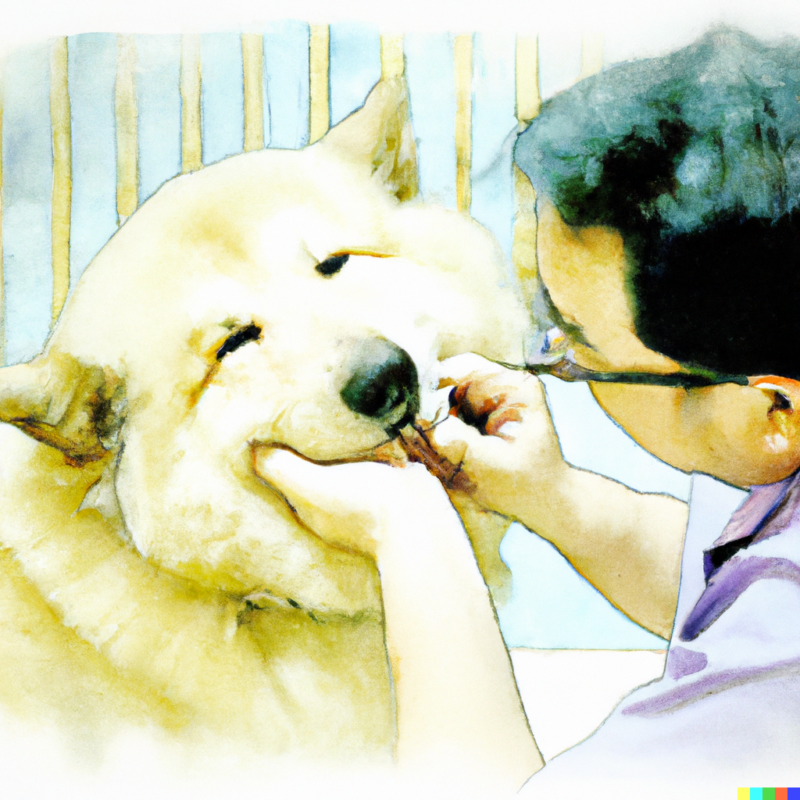
Radiography
Dental x-rays or full skull radiographs might be performed to assess the involvement of the underlying bone, detect any tooth root abnormalities, and aid in planning any potential surgery to remove the growth surgically. In certain situations, chest radiographs may also be conducted to search for any evidence of metastasis in the event of suspected malignant tumors.
Advanced Imaging Techniques
For some cases, advanced imaging like CT (computed tomography) scans might be employed to acquire a more precise image of the mass and the surrounding structures, particularly if the tumor is sizable or situated in a complex location.
These diagnostic procedures provide the veterinarian with invaluable data about the growth, its proximity to gum tissue near teeth, and potential treatment options. It’s vital to remember that while epulis tumors are often benign, any growth in a dog’s mouth should be approached with seriousness and evaluated by a veterinarian to guarantee suitable treatment.
Treatment Options for Epulis in Dogs
Epulis tumors in dogs, including benign epulis, while generally non-cancerous, can induce discomfort or complications due to their size and placement. Consequently, treatment is typically advised. The cornerstone treatment for an epulis tumor involves surgical excision, but the nature and scope of the surgery can differ based on the tumor’s features. Let’s explore the typical treatments in greater depth:
Surgical Removal
This is the prevalent treatment for an oral tumor like epulis. The objective is to extract the entire tumor and a margin of surrounding tissue to guarantee total removal and prevent tumor recurrence or new tumors. The tumor’s size and location within the dog’s mouth will dictate the extent of the surgery. For smaller tumors, a precise local excision may be adequate. However, if the tumor is large or affects the underlying bone, more extensive surgery, such as removing a section of the impacted jaw (mandibulectomy or maxillectomy), could be necessary.
Cryotherapy
Particularly for smaller tumors, cryotherapy might be a viable option. This method employs extreme cold (usually via liquid nitrogen) to exterminate the tumor cells. Though less invasive than conventional oral surgery, this technique may not be appropriate for larger tumors.
Laser Surgery
Some veterinary practices may offer laser surgery, cutting through tissue while sealing blood vessels concurrently. This method can minimize bleeding during surgery, resulting in less post-operative discomfort and faster recovery. However, not all tumors are compatible with laser surgery, and the service may not be accessible at all veterinary practices.
Radiation Therapy
In cases where the tumor can’t be fully removed with surgery due to its large size or intricate location, or if the owner does not pursue surgery, radiotherapy might be an alternative. This method uses radiation to eliminate the tumor cells. Nevertheless, radiotherapy is typically only offered at specialty veterinary practices, and multiple treatments are often required.
Observation and Supportive Care
If the epulis isn’t causing discomfort or interfering with eating, and the dog is otherwise healthy, the veterinarian might suggest observing the tumor rather than removing it. This approach is more common in older dogs or those with other significant health issues. Regular monitoring of the tumor would be conducted to see if it’s growing or inducing issues, with treatment pursued if necessary.
It’s crucial to have an in-depth discussion with your veterinarian about the optimal treatment options for your pet. The decision will hinge on various factors, including the tumor type (e.g., malignant melanoma), size, location, the dog’s overall health, the availability of different treatments, and the owner’s preferences. Remember, treatment depends on many aspects, and dogs having this condition should be handled with personalized care.
Recovery and Management for Epulis Tumor in Dogs
The recovery and management process following surgery for an epulis tumor in dogs can be crucial to ensure optimal healing and prevent complications. Here are some aspects of recovery and management that might be involved:
- Post-Operative Care: After surgery, your dog may need pain medication and potentially antibiotics to prevent infection. It’s crucial to follow the veterinarian’s instructions regarding medication administration. Also, monitor the surgical site daily for signs of infection, including swelling, redness, or discharge.
- Dietary Changes: Following oral surgery, your dog might need to eat a soft diet or have its regular kibble soaked in water to make it easier to eat while the mouth heals. Your veterinarian will advise you on how long to continue this.
- Follow-Up Visits: Post-operative check-ups are essential to ensure your dog is healing well. These visits may include examining the surgical site and possibly repeat X-rays to confirm the complete removal of the tumor.
- Oral Hygiene: Good oral hygiene can help prevent inflammation and potential recurrence of an epulis. Regular tooth brushing, dental chews, professional dental cleanings, and tumor removal, as your vet recommended, can contribute to oral health.
- Regular Monitoring: Even after successful removal, monitoring your dog’s mouth regularly for any signs of new growth is crucial. Early detection of changes can lead to prompt intervention, significantly improving outcomes.
- Management of Underlying Conditions: If an underlying condition like periodontal disease is present, it’s crucial to manage this effectively to reduce the risk of future oral health problems. This could involve regular dental cleanings and changes to your dog’s diet or oral hygiene routine.
Remember, each dog is unique, and the recovery and management plan will be individualized based on your dog’s specific situation. Always follow your vet’s instructions, and don’t hesitate to contact them if you have any concerns during your dog’s recovery period.
Prevention for Epulis in Dogs
While there is no guaranteed way to prevent an epulis tumor in dogs since the exact cause is not known, there are measures pet parents can take to promote overall oral health, which could help reduce the risk. Here are some preventive measures:
- Regular Oral Hygiene: Brush your dog’s teeth daily or at least several times weekly. Use dog-friendly toothpaste, as human toothpaste can be harmful to dogs. Various dog toothbrushes are available, or you could use a finger brush or even a piece of gauze wrapped around your finger.
- Dental Diets and Chews: Certain diets and dental chews are designed to help clean the teeth as the dog chews. These can be a helpful supplement to brushing. Always supervise your dog with chews to prevent choking.
- Regular Veterinary Check-ups: Regular check-ups allow your vet to monitor your dog’s oral health and detect abnormalities early. Early detection often leads to better outcomes. Your vet can also perform a professional dental cleaning as needed.
- Professional Dental Cleanings: Depending on your dog’s oral health, your vet may recommend professional dental cleanings under anesthesia. These cleanings allow for a thorough mouth examination and removing plaque and tartar, both above and below the gum line.
- Toys: Provide safe, appropriate chew toys that can help with the mechanical removal of plaque.
- Healthy Diet and Weight: A balanced diet and maintaining an appropriate weight for your dog can also contribute to overall health, including oral health.
- Avoid Trauma to the Mouth: Though not a direct cause, trauma to the mouth could potentially contribute to oral health issues. Prevent your dog from chewing on hard objects that could cause damage to the teeth and gums.
These preventive measures can help maintain your dog’s oral health and reduce the risk of dental and oral health issues, including developing an epulis. However, it’s always important to regularly monitor your dog’s mouth for any changes and seek veterinary attention if you notice any abnormalities.
Frequently Asked Questions
Disclaimer: The information provided on this veterinary website is intended for general educational purposes only and should not be considered as a substitute for professional veterinary advice, diagnosis, or treatment. Always consult a licensed veterinarian for any concerns or questions regarding the health and well-being of your pet. This website does not claim to cover every possible situation or provide exhaustive knowledge on the subjects presented. The owners and contributors of this website are not responsible for any harm or loss that may result from the use or misuse of the information provided herein.

